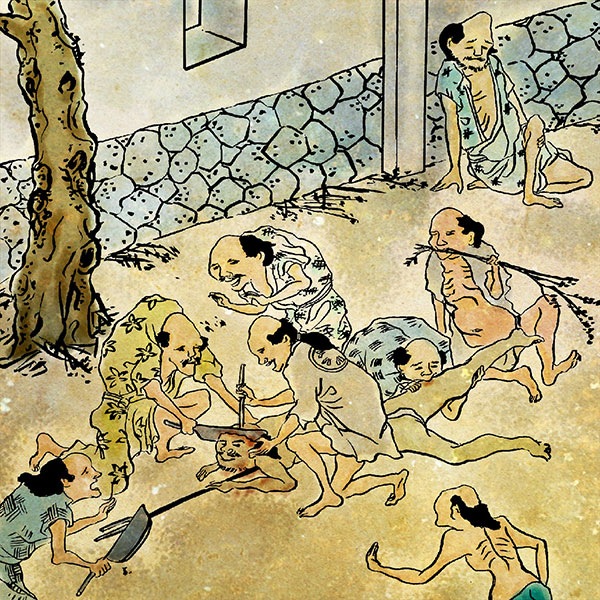- Yonago domainExisted only in the early Edo period
- The land of Yonago was a strategically important place where the Amago clan and Mori clan continued to fight over ownership during the Sengoku period. During the Toyotomi clan, Yonago was owned by the Mori clan and ruled by Hiroie Yoshikawa, a descendant of the clan. The Keicho 5 era saw a major change in control.

Yonago CastleYonago City, Tottori Prefecture
- spring
- summer
- autumn
- winter
- TOP
- China
- Tottori prefecture
- Yonago Castle
| Other name | Kume Castle, Minatoyama Kinjo |
|---|---|
| castle construction | 1470 |
| address | Kume Town, Yonago City, Tottori Prefecture |
- Access to Yonago Castle
- 20 minutes walk from JR Yonago Station.
HISTORYYonago Castle is now known as a scenic spot
Construction of Yonago Castle began in 1591 and was completed in 1601, and served as the residence of the Yonago clan for a short period of time. It was once famous as one of the most famous castles in the San'in area, and is now known as a scenic spot with a panoramic view of Yonago City. Let's unravel the history of Yonago Castle.
- Until the construction of Yonago Castle
- Yonago Castle is an advanced version of the fort that was built on top of Iiyama during the Sengoku period, and in the early Edo period, a modern castle was rebuilt around Minatoyama. Yonago Castle during the Sengoku period was built on the top of Iiyama with a wall measuring approximately 85 meters from north to south and approximately 35 meters from east to west, with two tiers of stone walls each measuring about 2 meters in height on the east and north sides. I know that. It is also known that there were three gates and buildings, but only traces of the stone walls remain today.
Yonago Castle, which was newly built in the early Edo period, had a main enclosure on the summit of Mt. Minato, a second enclosure halfway up the north side, and a third enclosure below. It is recorded that the fort on top of Iiyama became Demaru.
It has a four-tiered castle tower called the Daitenjyo, a four-tiered turret, 30 turrets, and 20 gates, and was called the most famous castle in the San'in area at the time of its construction. Yonago Castle was built by two warlords, Hiroie Yoshikawa and Kazutada Nakamura, and Hiroie Yonago was defeated by his master Terumoto Mori, the general of the Western army, during the Battle of Sekigahara in 1600. As a result, he was transferred from Yonago to Iwakuni.
After that, it was left to Kazutada Nakamura, the legitimate son of Kazuuji Nakamura, one of Toyotomi Hideyoshi's top three senior officers. Mr. Hajime Nakamura was also a loyal vassal of Toyotomi Hideyoshi, but just before the Battle of Sekigahara, he met with Tokugawa Ieyasu at the Naizen residence in Sunpu Castle and joined the Tokugawa army in the East. It is said that because of this achievement, Kazutada Nakamura was given the land of Yonago. Kazutada Nakamura was only 11 years old at this time, but with the help of his vassals, he devoted his efforts to not only Yonago Castle but also the castle town of Yonago, building the foundations of Yonago City, which flourished as a commercial capital during the Edo period. I did. - Sudden death of Kazutada Nakamura and the aftermath of Yonago Castle
- In 1609, Kazutada Nakamura suddenly died, but as there was no successor, the family line was cut off and the Nakamura family was abolished. Afterwards, Sadayasu Kato was appointed to the Yonago domain with two districts and 60,000 koku in Hoki, but when he was transferred to the Ozu domain in 1617, Yonago The domain was abolished.
After that, Yonago became the domain of Mitsumasa Ikeda of the Tottori domain, and Yoshinari Ikeda, a chief retainer, was stationed in Yonago as the castle lord. Furthermore, there was a view that Yonago Castle would become the domain office of the Tottori Domain for a time, but in the end that did not materialize, and Yonago Castle was abandoned until the Meiji Restoration, when the Arao Tajima clan, the chief retainers of the castle, served as castle owners. - Yonago Castle after the Meiji era
- When the Meiji Restoration began, Yonago Castle was sold in 1879 to the antique dealer Yamamoto Shinsuke for 30 yen, and all the notable buildings were demolished, leaving only the stone walls. Later, in 1951, Minatoyama was combined with Yonago Park, which was then called Nishiki Park, to form the current Minatoyama Park. Excavations at Yonago Castle were conducted again from 1988 to 1989, and in 1991, the remains of the stone walls containing ships were discovered. In 2006, it was designated as a national historic site, and in 2017, it was selected as one of Japan's Top 100 Castles. Currently, there are no notable buildings left in Yonago Castle other than the stone walls, but it has become a hidden gem as a scenic spot with a panoramic view of Yonago City.
- summary
- Although Yonago Castle is said to be one of the most famous castles in the San'in region, it never became the domain office after the extinction of the Nakamura family, and after the Meiji Restoration as one of the branch castles, everything but the stone walls were demolished. Although the building has not been restored to this day, the castle ruins have been maintained and have become a hidden scenic spot.
Read about incidents related to Yonago Castle
- Battle of Tottori Castle“Thirst killing” due to the worst siege battle in history
- During the Sengoku period, many siege battles were fought, but the most famous siege battle in the San'in region was the one in 1581 when Toyotomi Hideyoshi attacked Tottori Castle (present-day Tottori City, Tottori Prefecture). It would be "The Thirst Killer of Tottori Castle." Bitchu Takamatsu Castle (Okayama Prefecture)

History of the Yonago domain, with Yonago Castle as the domain office
| Domain office | Yonago Castle |
|---|---|
| old area | Houkidai Kengun |
| stone height | 60,000 koku |
| Fudai/Tozama | Foreigner |
| main lord | Nakamura family/Kato family |
Kazutada Nakamura founded the Yonago domain, but was forced to change his name due to family disturbances. After that, the Kato clan, who entered the domain, transferred the domain and the domain was abolished.













